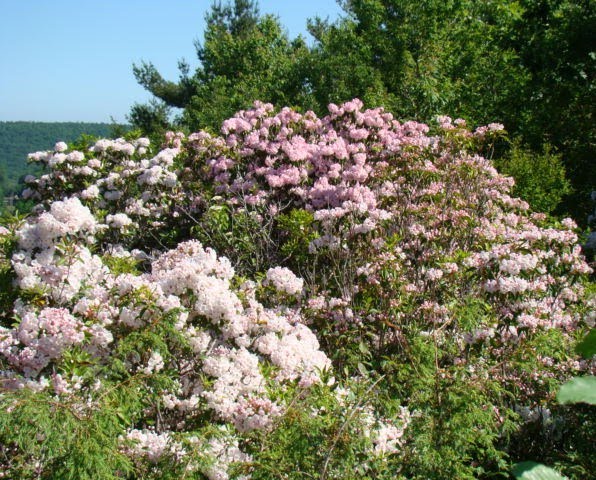
General Information
Flowering Dogwood is a small tree growing about 15 to 30 feet tall. It grows in the eastern and central United States, and extends north and west into Ontario, then south from Michigan to eastern Texas and Mexico, and east to central Florida.
One of America’s most popular ornamental trees, Flowering Dogwoods are among the earliest blooming trees in spring. With its dense crown it provides useful shade in gardens and has a graceful and relatively compact shape.
Plant Habit and Form
Flowering Dogwood has a short trunk with a full, rounded crown measuring about 15 to 20 feet across. The branches lie horizontally in a tiered fashion. The bark on mature specimens is broken up into small scaly brown to black blocks. It has simple, opposite, deciduous leaves that are 3 to 6 inches long and about 1 1/2 to 2 inches wide.

Growing Requirements
Flowering Dogwood can tolerate full sun but prefers partial shade in the warmer extremes of its range. It is hardy in zones 5 to 9. It grows best in cool, moist, acidic soils rich in organic matter. It is not tolerant of drought, heat, pollution and road salt.
Flowering and Fruiting
Flowering Dogwood’s flowers comprised of four greenish white, occasionally pink, bracts surrounding a compact head. They are followed by clustered bright red, ovoid fruits about a 1/2 inch long. Some trees retain fruit in winter. The fruit is popular with a wide variety of bird species including turkey and ruffed grouse.
Pests and Diseases
Trees can be bothered by dogwood and flatheaded borers, twig girdler, and dogwood scale among other pests. Cankers can occur on the trunk and limbs.
ID Tips
Reddish purple twigs, large flattened flower buds, horizontal branches, and white flowers comprised of four bracts in May.

